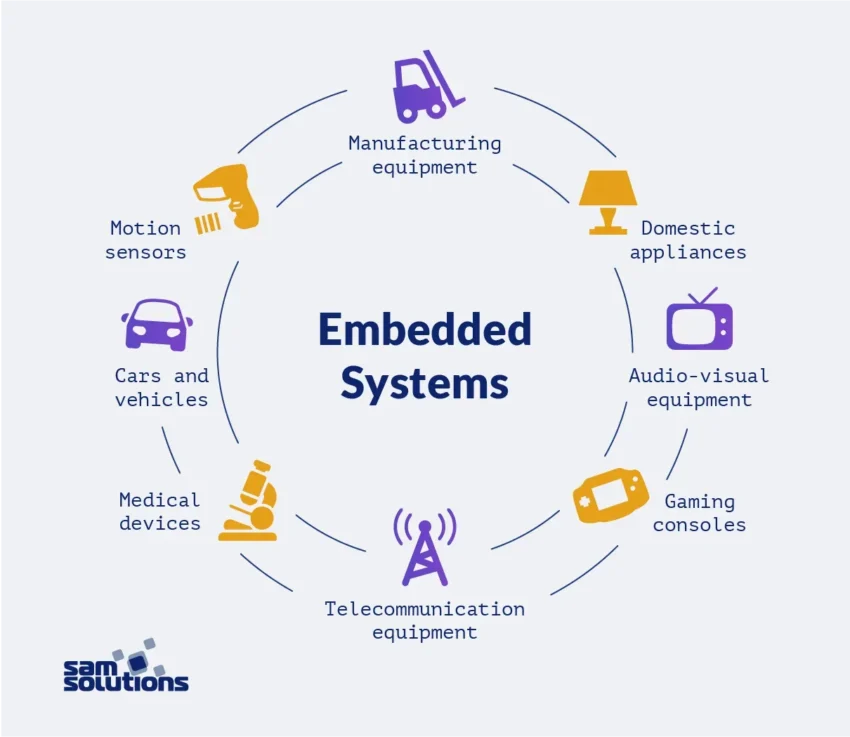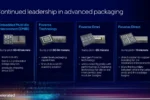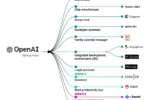Embedded technologies are at the forefront of innovation, shaping the way we interact with the world around us. From the latest developments in AI in embedded systems to advancements in wireless sensor technology, these technologies are transforming industries and enhancing everyday devices. This week, the acquisition of Secure-IC by Cadence highlights the growing importance of secure and efficient embedded systems news in the tech landscape. Additionally, products like the NVIDIA Jetson Orin Nano are paving the way for new applications in generative AI, showcasing the synergy between hardware and software. As we explore these fascinating developments, it’s clear that embedded technologies are not just a trend but a crucial component of our technological future.
In the realm of smart devices and interconnected systems, embedded technologies, often referred to as integrated systems or smart embedded solutions, play a critical role. These systems encompass a blend of hardware and software designed to perform specific functions within larger systems, making them essential in fields ranging from consumer electronics to industrial automation. This week’s highlights include Cadence’s strategic move to enhance its silicon offerings and showcase the immense potential of wireless sensor technology for data transmission in challenging environments. Furthermore, the introduction of advanced computing platforms like the NVIDIA Jetson Orin Nano signals a significant leap in capabilities, particularly in the realm of artificial intelligence applications. As we dive deeper into these topics, we see how embedded solutions continue to evolve and impact our daily lives.
The Future of Embedded Technologies: Innovations on the Horizon
Embedded technologies are rapidly evolving, integrating more advanced features and applications than ever before. The acquisition of Secure-IC by Cadence is a prime example of how the industry is poised for growth. This strategic move not only enhances Cadence’s portfolio with innovative silicon-proven IP but also reflects the increasing demand for sophisticated solutions that incorporate AI and machine learning functionalities. As embedded systems become more complex, the need for robust design services and comprehensive system solutions will only heighten.
Moreover, the integration of AI into embedded systems is set to redefine the landscape of technology. With advancements in generative AI models and the unveiling of platforms like the NVIDIA Jetson Orin Nano, embedded engineers are now equipped with powerful tools to create smarter, more efficient systems. This shift towards intelligent embedded solutions is not just a trend; it is becoming a necessity in various sectors, including automotive, healthcare, and consumer electronics.
Cadence’s Acquisition of Secure-IC: A Game Changer in Embedded Systems
The recent acquisition of Secure-IC by Cadence marks a significant milestone in the embedded systems industry. By enhancing its offerings in IP and design services, Cadence is positioning itself as a leader in providing comprehensive solutions that meet the growing demands of embedded applications. With a focus on security, AI, and machine learning, this acquisition is set to empower developers to create more secure and efficient systems, ultimately leading to greater innovation across various sectors.
This move also emphasizes the importance of securing embedded systems, particularly as they become more interconnected and integral to our daily lives. As Boyd Phelps, SVP & GM of the Silicon Solutions Group at Cadence, stated, the company is committed to investing in its IP portfolio to provide complete system solutions. This strategic focus is crucial as it addresses the rising concerns regarding cybersecurity in embedded technologies, ensuring that developers have the necessary tools to build resilient systems.
Wireless Sensor Technology: Transforming Embedded Systems Design
At CES, TDK’s showcase of its Acoustic Data Link technology represents a groundbreaking advancement in wireless sensor technology. By enabling the wireless transmission of power and data through metal, this innovation addresses a significant challenge faced by embedded systems designers. Traditionally, wireless communication has struggled with energy loss and data degradation in metal-shielded environments, but TDK’s solution opens new avenues for applications in sectors such as biotech and pharmaceuticals.
The implications of this technology extend far beyond simple data transmission. For instance, the ability to monitor sensors in pressurized vessels or operate RFID protocols through metal barriers will revolutionize how embedded systems function in challenging environments. As industries strive for greater efficiency and reliability, wireless sensor technology will play a pivotal role in advancing the capabilities of embedded systems, making them more versatile and applicable in real-world scenarios.
AI in Embedded Systems: Driving Innovation and Efficiency
The integration of AI into embedded systems is rapidly transforming how devices operate and interact with their environments. The launch of Syslogic’s RSA4NA rugged computer, powered by the NVIDIA Jetson Orin Nano, exemplifies how AI is enhancing embedded solutions. This platform not only increases computational capabilities but also optimizes energy consumption, allowing for more efficient operation in demanding conditions.
As AI models become more sophisticated, embedded systems will increasingly leverage these advancements to deliver smarter functionalities. From autonomous vehicles to smart home devices, the role of AI in embedded systems is pivotal. Companies that embrace this technology will not only improve their products but also gain a competitive edge in the market, as consumer expectations continue to rise for intelligent and responsive devices.
Exploring the Applications of Embedded Technologies in Various Industries
Embedded technologies have found applications across a myriad of industries, each leveraging unique capabilities to solve specific challenges. In healthcare, for instance, embedded systems enable remote monitoring of patients, providing real-time data that can significantly improve patient outcomes. By utilizing advanced sensors and wireless communication, healthcare professionals can monitor vital signs without being physically present, showcasing the transformative potential of embedded technologies.
Similarly, the automotive industry is experiencing a revolution with the integration of embedded systems for enhanced safety and efficiency. From advanced driver-assistance systems (ADAS) to fully autonomous vehicles, the reliance on embedded technologies is only expected to grow. As manufacturers continue to innovate, the demand for secure and efficient embedded solutions will persist, driving further research and development in this dynamic field.
The Role of Embedded Computing Design in Advancing Technology
Embedded Computing Design plays a crucial role in educating and informing industry professionals about the latest advancements in embedded technologies. Through initiatives like the ICYMI: Embedded Insights show, audiences gain valuable insights into emerging trends, innovative products, and strategic acquisitions that shape the future of embedded systems. This platform serves as a vital resource for engineers, developers, and makers looking to stay ahead in a rapidly evolving landscape.
Additionally, the focus on networking and community engagement fosters collaboration among professionals in the field. By encouraging discussions around topics such as AI in embedded systems and the latest news from events like CES, Embedded Computing Design helps to cultivate a culture of innovation and knowledge sharing. This collaborative spirit is essential for driving progress within the industry and inspiring the next generation of embedded engineers.
Preparing for the Future: Trends in Embedded Technology
As we look to the future, several key trends are emerging in the field of embedded technology. The increasing integration of AI and machine learning into embedded systems is expected to drive significant advancements in performance and functionality. This trend will not only enhance existing applications but also pave the way for new innovations that were previously thought to be unattainable.
Moreover, the focus on security within embedded systems is becoming more pronounced. With the growing interconnectedness of devices, ensuring the integrity and security of embedded systems is paramount. Companies like Cadence, through their acquisition of Secure-IC, are recognizing this need and are committed to developing solutions that prioritize security alongside performance. As these trends continue to unfold, the landscape of embedded technologies will undoubtedly transform in exciting and impactful ways.
Engaging with the Embedded Community: Opportunities for Collaboration
Engagement within the embedded community is vital for fostering innovation and collaboration among engineers, developers, and enthusiasts. Events like Embedded World in Nuremberg provide a platform for professionals to connect, share knowledge, and explore new opportunities. These gatherings allow attendees to learn from industry leaders, discover the latest technological advancements, and discuss best practices in embedded systems design.
Additionally, platforms such as LinkedIn and dedicated newsletters offer continuous learning and networking opportunities. By staying connected with the embedded community, professionals can share insights, seek advice, and collaborate on projects that push the boundaries of what is possible in embedded technologies. This sense of community not only enhances individual expertise but also contributes to the overall growth and innovation within the industry.
Adapting to Changes in Embedded Systems: Embracing New Technologies
The embedded systems landscape is constantly evolving, with new technologies emerging at an unprecedented pace. For engineers and developers, adapting to these changes is crucial for success. Embracing new tools, languages, and platforms can significantly enhance the efficiency and effectiveness of embedded systems design. As seen with the introduction of platforms like NVIDIA Jetson Orin Nano, staying updated with the latest technologies allows developers to leverage powerful capabilities for their projects.
Furthermore, the integration of wireless sensor technology and AI into embedded applications signifies a shift towards more intelligent and responsive systems. By adopting these innovations, professionals can create solutions that not only meet current demands but also anticipate future needs. The ability to adapt to technological advancements is essential for remaining competitive in the rapidly progressing field of embedded systems.
Frequently Asked Questions
What is the significance of Cadence’s acquisition of Secure-IC in embedded technologies?
Cadence’s acquisition of Secure-IC is significant for embedded technologies as it enhances Cadence’s portfolio of silicon-proven intellectual property (IP). This acquisition allows for the integration of advanced interfaces, memory, and AI/ML solutions into embedded systems, ultimately providing more comprehensive system solutions for developers and engineers.
How does wireless sensor technology improve embedded systems applications?
Wireless sensor technology enhances embedded systems by enabling data transmission without the need for physical connections. This is particularly beneficial in environments where traditional RF signals may fail, such as in metal-shielded housings or pressurized vessels, which can be crucial for applications in biotech and chemical monitoring.
What role does AI play in the development of embedded systems, particularly with NVIDIA Jetson Orin Nano?
AI plays a critical role in the development of embedded systems, especially with platforms like the NVIDIA Jetson Orin Nano. This System-on-Module (SoM) supports generative AI models and offers high computational capabilities, allowing developers to create innovative applications that require significant processing power in a compact and rugged form factor.
What are the potential applications of TDK’s Acoustic Data Link technology in embedded systems?
TDK’s Acoustic Data Link technology opens up numerous potential applications in embedded systems, such as wireless sensor operation in environments where RF signals are ineffective, data monitoring in pressurized vessels, and facilitating ID identification through metal barriers. These capabilities represent a significant advancement in the usability of embedded technologies in various sectors.
Why is the RSA4NA computer by Syslogic considered a breakthrough in rugged embedded systems?
The RSA4NA computer by Syslogic is considered a breakthrough in rugged embedded systems due to its high-performance capabilities powered by the NVIDIA Jetson Orin Nano, alongside its robust design. With an IP67 and IP69 rating, it is resistant to moisture and dust, and it operates efficiently in extreme temperatures, making it ideal for demanding environments such as industrial automation and outdoor applications.
| Key Point | Details |
|---|---|
| Cadence Acquires Secure-IC | To enhance its silicon-proven IP offerings in interfaces, memory, AI/ML, and DSP solutions. |
| TDK’s Acoustic Data Link (ADL) Technology | Allows wireless transmission of power/data through metal, targeting applications like wireless sensor operation and monitoring, sensor operation in pressurized vessels, ID identification through metal, and wireless safety data monitoring. |
| Syslogic’s RSA4NA Rugged Computer | Based on NVIDIA Jetson Orin Nano SoMs, it features increased power efficiency and is designed for extreme conditions with IP67/IP69 ratings. |
Summary
Embedded technologies are rapidly evolving, as demonstrated by the latest innovations in the field. This week’s highlights include Cadence’s acquisition of Secure-IC to enhance their silicon solutions, TDK’s introduction of Acoustic Data Link technology for effective wireless communication through metal, and Syslogic’s rugged RSA4NA computer that leverages NVIDIA’s advanced AI capabilities. These advancements showcase the potential of embedded technologies in various applications, from smart sensors to robust computing solutions, paving the way for future developments in the industry.






